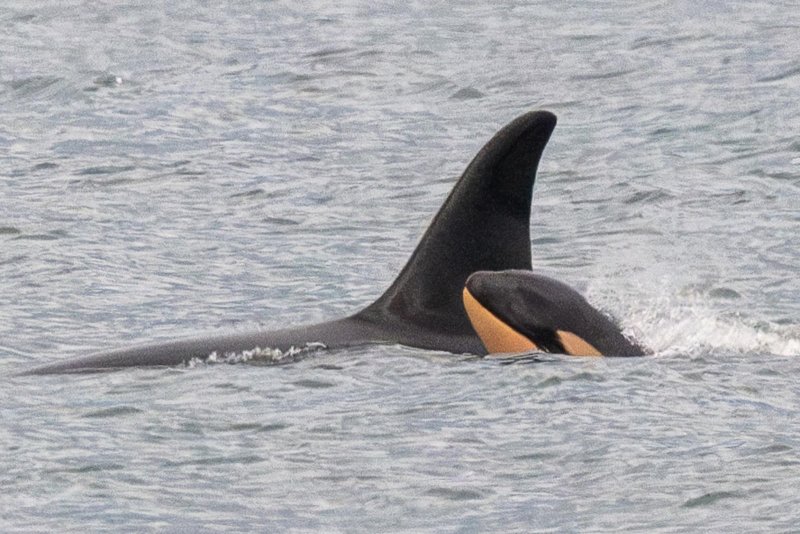Image of J61 swimming next to their mother J35 on Dec. 21. Researchers believe J61 has died. Photo courtesy of Center for Whale Research Facebook
Jan. 3 (UPI) — The orca nicknamed Tahlequah was spotted carrying her new calf on her head, much the way she did another calf six years ago.
Researchers with the National Oceanic and Atmospheric Administration first spotted Tahlequah, officially known as J35, swimming next to what was believed to be her new calf, known at J61, on Dec. 20 in the Pacific Ocean near Washington State.
On Wednesday, though, researchers snapped a picture of J35 near West Seattle with a baby whale carcass on her head, believed to be an expression of grief by the mother.
Six years ago, Tahlequah was seen carrying her dead calf for 17 days and traveling some 1,000 miles.
“We were able to confirm that J35 had lost the calf and she was pushing it around with her head,” Brad Hanson, a research scientist with the NOAA Fisheries Northwest Fisheries Science Center, said.
Hanson said when the calf sank, “it looks like she’ll do a high arch dive to go down and recover the calf, and whether or not she’s pushing it or at that point or grabbing it, we’re not real sure.”
The NOAA said that it believes J61 lived for about a week and may have been dead for several days when they spotted the calf and the mother.
Scientists are keeping a careful eye on J35 and the other orcas as a critically endangered species. They are part of a subpopulation of whales known as southern resident killer whales, numbering 73. Tahlequah has had two calves that have survived, the latest born in 2020.
The Center for Whale Research had expressed concern last month after observing J35 and J61 together but had hoped for the best.
“Early life is always dangerous for new calves, with a very high mortality rate in the first half,” the center said.
